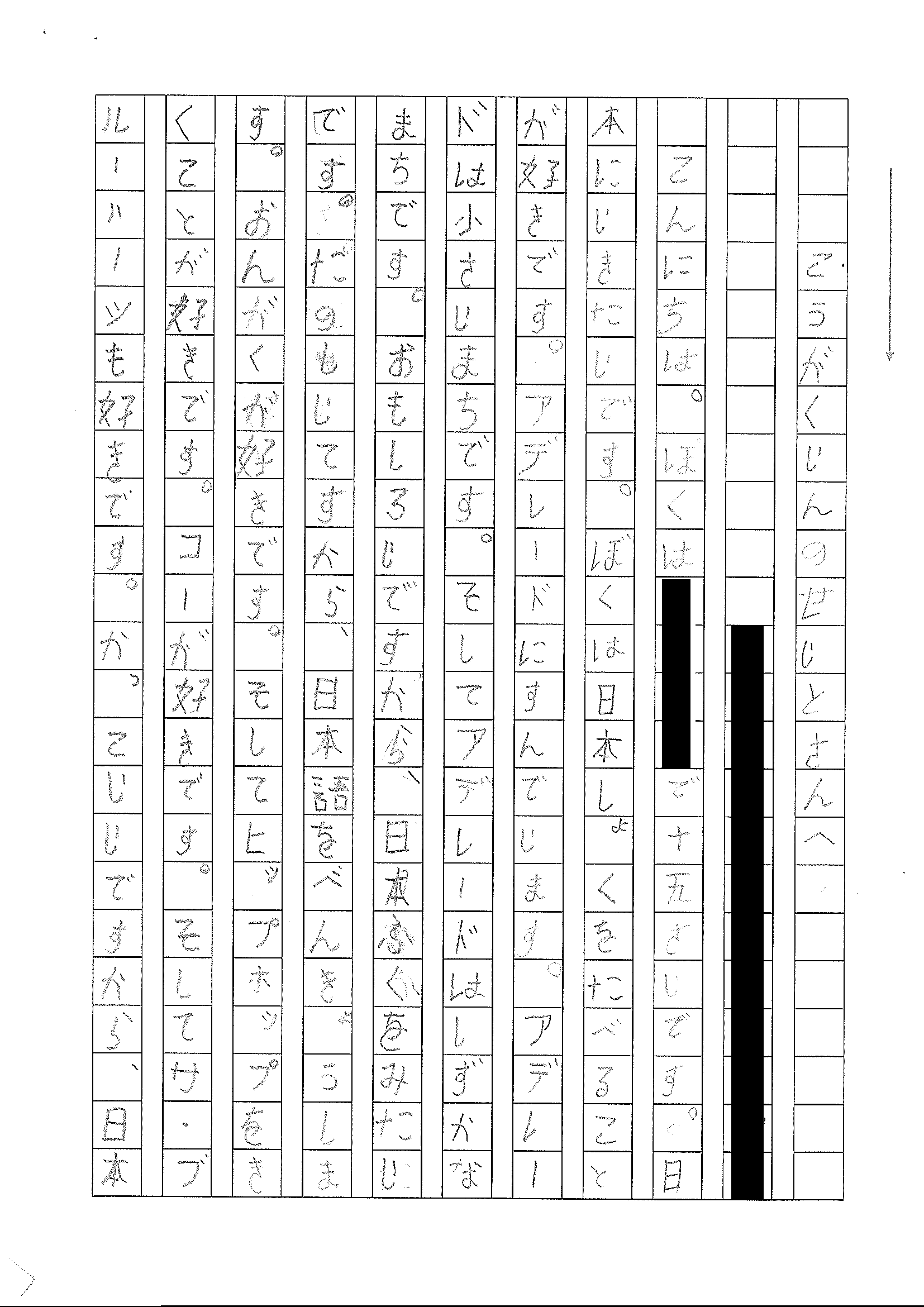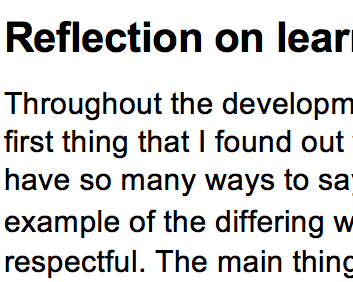By the end of Year 10, students use written and spoken Japanese to interact with peers, the teacher and other Japanese speakers to exchange information and opinions about personal interests and experiences. With support they share information about broader topics of interest, such as education, travel, sport, teenage life and popular culture. When collaborating in shared tasks and activities, they use set phrases and modelled language to transact and make arrangements, for example, 来週(らいしゅう)の土曜日にサッカーをしませんか。土曜日はちょっと…。Students ask and respond to questions, such as どのぐらい、いくつ、 using spontaneous language. They provide explanations, opinions and reasons, for example, by using ~と思います、 ~からです. They maintain and extend interactions by requesting repetition or clarification and by using あいづち. They apply appropriate conventions of pronunciation, rhythm and phrasing in speech to allow for others’ use of あいづち. Students read and write hiragana and known kanji, read katakana, and write familiar katakana words, including elongated vowels, double consonants and contractions. They analyse and extract information from a range of spoken and written texts and multimodal sources. They understand gist and predict the meaning of unfamiliar words and expressions from context, grammatical and vocabulary knowledge. Students create and present informative and imaginative texts, taking into account audience and purpose, such as by using てform (~てはいけません、~てもいいです、 ~ています), and the plain form (~たり~たりします、 ~と思います、~つもり). They extend or qualify their message by using adverbs such as とくに、 時々(ときどき)、 and link ideas by using conjunctions, such as それに、 だから、 けれども. Students translate and interpret texts, explaining words and expressions that are difficult to translate and those with embedded cultural meanings, such as ただいま, おかえり. They describe their reactions to intercultural experiences and reflect on how their own assumptions and identity influence and are influenced by their language use.
Students identify the functions of different scripts within texts: how hiragana is used for particles, conjunctions, and verb and adjective endings; katakana for borrowed words and some onomatopoeia; and kanji for nouns and verb and adjective stems. They apply their understanding of kanji to identify word boundaries and know its role in assisting with the identification of linguistic elements. They distinguish between おくりがな and ふりがな、 and recognise that kanji can be pronounced differently using 音 (on) or 訓 (kun) readings. Students understand the function of verb stems, and of て form and plain form verbs, and conjugate a range of verb tenses and forms. They apply their understanding of conjugation to produce negative and past adjectives. Students identify and use a range of case particles such as か (or), より、 で (purpose/by) and に (location). They use metalanguage to describe and compare language features and rules of sentence construction. They choose between using です/ますor plain form based on age, relationship, familiarity, context and text type, such as using plain form in a personal diary. They understand that languages change over time through contact with other languages and cultures, and identify the particular impact of technology and media on contemporary forms of communication, for example, the widespread adoption of English terms into Japanese, such as コピペ. Students explain how Japanese cultural values such as the importance of community, 内(うち)/外(そと)、 respect, and consideration for others are embedded in language and behaviours such as がんばりましょう。 だいじょうぶ?。



